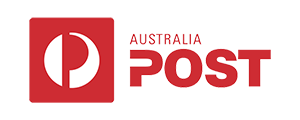
Lauren Jauncey, (formerly) Head of Diversity & Inclusion, Australia Post
We asked Lauren to tell us more about this successful initiative…
The importance of explicitly exploring and acting upon wellbeing became evident to Lauren Jauncey, the then Head of Diversity and Inclusion at Australia Post and so the GLWS was introduced as the diagnostic to assist the executives gain insight into the factors that affected their wellbeing and provide action points for what to do about it. This became an important element of the mentoring program.
We asked Lauren to tell us more about this successful initiative…
– Lauren Jauncey, (formerly) Head of Diversity & Inclusion, Australia Post
We actively wanted to address this and we have therefore put in place a range of programs focused on female leadership development, mentoring and internal sponsorship. What we’ve tried to do is look at what support women need at specific transition points in their career path and design the programs accordingly.
We identified that once women got to a senior executive level, they have usually taken on large teams with large responsibilities and they’re managing a lot of stuff both in and outside of work. But what they lack in comparison to their male counterparts is internal sponsors. So we set up a mentoring program for women at this point in their career transition – the tenprogram.
Over the six month mentoring period, they develop a great relationship and they also meet the other mentors involved in the program through a series of round table discussions. We have great success stories of women moving into diverse cross-business roles as a result of the program, that they would probably not have considered, had it not been for the relationship with their mentor and being exposed to new areas of the business.”
From an executive coaching perspective it works so well, because is sets the scene from the outset.”
For those executives who are in sync and are in a great space, it allows the conversation around how and why things are so good at the moment. But we know wellbeing isn’t a constant state and the pressures and challenges we face change. So it’s valuable to identify what’s working so well at the moment and understand the important factors to each individual so they know what affects their wellbeing the most. This gets these important points on the radar and can be returned to later when things are not so great to redress the balance.
The questions are thought provoking and direct so people can’t hide away from what is in there. So it is an eye opener and can be confronting for some people but the GLWS framework has been described in a way that allows people to really understand it and understand it in a productive and positive way. This is another critical point because the process doesn’t leave people feeling negative. It casts light on all facets of what is important to you and if you are out of sync, it pinpoints why. There are direct development action points and steps that can be taken to redress the balance and have a positive effect on wellbeing. This is one of the absolute strengths of the GLWS.”
I’ve received feedback from participants after their sessions as to how valuable they’ve found it. One who I thought may have been sceptical found it really positive, and after sharing it with her mentor (who was new to the business), the mentor requested to complete GLWS too! There’s no higher praise than that.”
Founder Frankly Women
